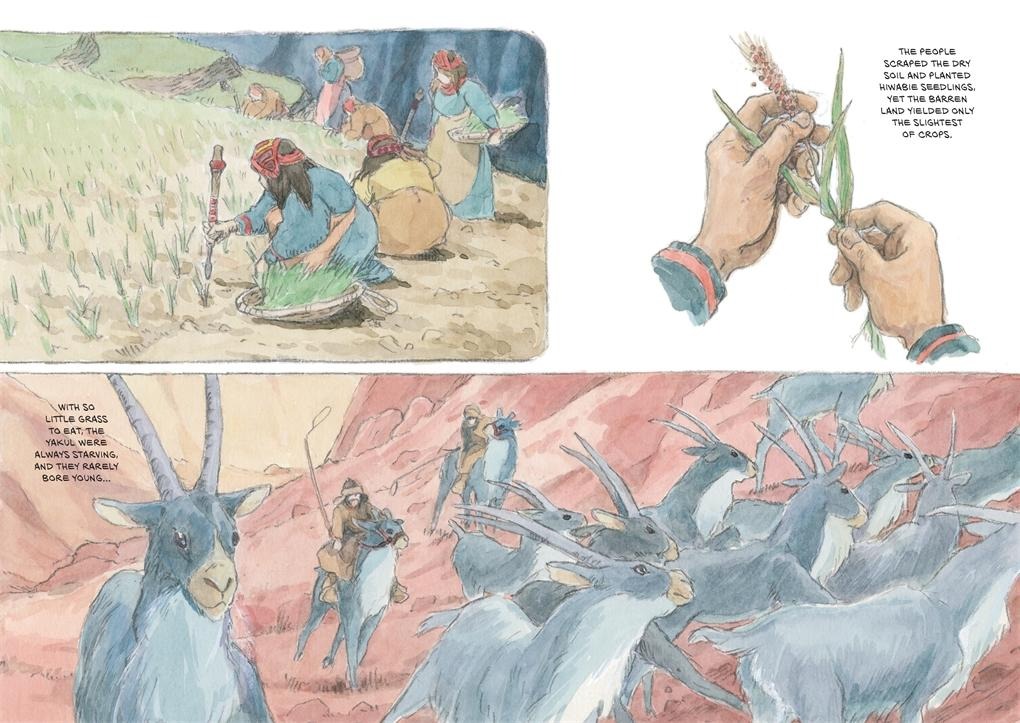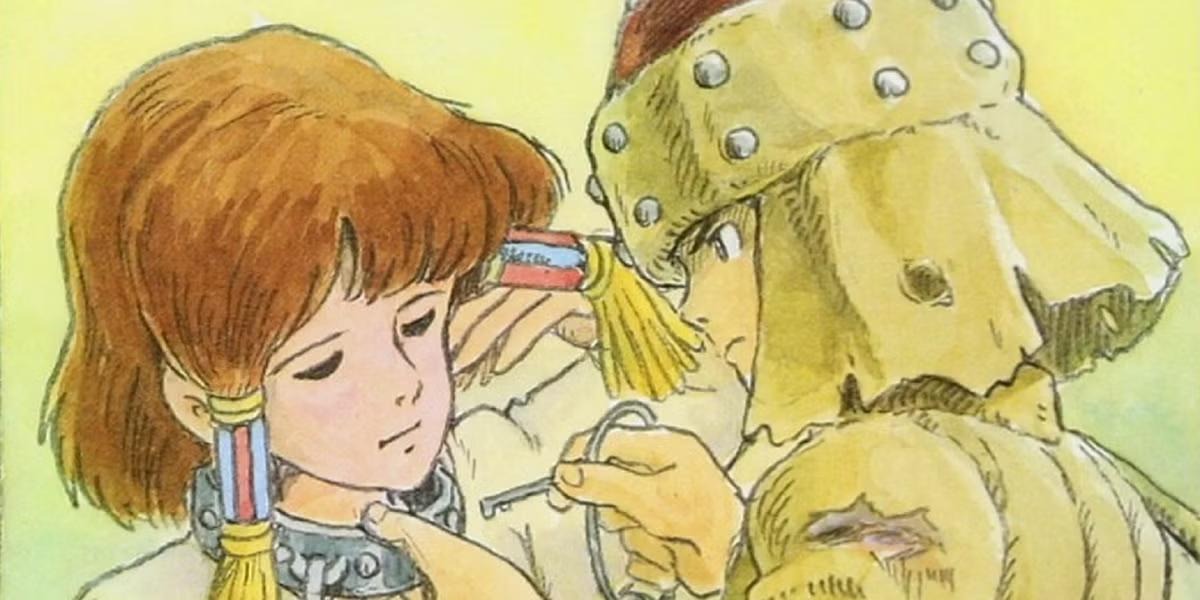When I picked up The Journey of Shuna on ComicK, I honestly thought I knew what I was in for: a Miyazaki work meant to be admired from afar, maybe a little too abstract for bedtime reading. What I didn’t expect was how much this illustrated tale would get under my skin quietly, beautifully, and with a kind of raw honesty that left me staring at the last page long after I’d finished.
This isn’t just another manga or picture book; it’s a haunting piece of storytelling that feels as though it was whispered to you by a fireside sage. Reading it felt less like consuming entertainment and more like taking part in a very old ritual a moral lesson dressed in watercolors, sorrow, and small bursts of hope. I can’t remember the last time a book felt this timeless and this necessary at the same time.
If you’ve ever wondered what it’s like to watch greed, compassion, and survival collide in a mythical landscape, The Journey of Shuna will give you exactly that and more than you bargained for.
Miyazaki’s Forgotten Gem
Everyone knows Miyazaki for Spirited Away or Princess Mononoke, but few realize he crafted this story back in 1983, long before Studio Ghibli became a household name. To me, The Journey of Shuna feels like his sketchbook of ideas, a testing ground for themes he would later refine in his films.
Yet, despite its age, it doesn’t feel dated. The story of Shuna, a young prince who abandons comfort to save his starving people, is as sharp and urgent as any dystopian tale written today. It’s proof that greed and morality aren’t just timeless they’re cyclical. We keep reliving them in different guises.
Reading this work is like peeking into Miyazaki’s creative laboratory, but instead of experiments, you’re met with a fully formed fable that cuts deeper than expected. It’s raw, it’s imperfect, and that’s exactly why it feels alive.

Shuna’s Quest: A Path Lined with Pain
At its heart, this is the story of a boy who sacrifices safety for the possibility of saving his land. Shuna’s journey westward, in search of the fabled golden barley, is not glamorous. It’s brutal. He faces hunger, betrayal, slavers, and even otherworldly horrors. And yet, he keeps moving forward.
I found myself quietly shaken by how much his struggles mirrored real-life sacrifices we don’t talk about often. How many times have people risked everything health, family, sanity just for the chance of a better tomorrow? Shuna carries that weight in every panel.
What hit me hardest wasn’t his victory, but the cost. This is not a feel-good fairytale. It’s a reminder that some treasures are worth bleeding for but they will leave scars.
The World of Cannibals, Slavers, and God-Men
Unlike many fantasy settings that feel like wish-fulfillment, the landscapes of Shuna’s Journey are cruel, eerie, and deeply unsettling. One moment you’re marveling at the delicate watercolor mountains, the next you’re recoiling at the thought of cannibal women or the oppressive presence of the god-men.
I loved how the story never sugarcoats its dangers. Miyazaki doesn’t coddle the reader. Instead, he confronts us with the ugliness of greed entire systems of exploitation, cycles of cruelty that feel uncomfortably familiar.
And yet, tucked between the shadows, there are flashes of humanity. Rescuing Thea and her sister, leaving Yakul behind, these moments of tenderness are what make the bleakness bearable. Without them, the story would collapse under its own weight.
Illustrated Like a Dream, Told Like a Legend
Let’s talk about the art. These aren’t comic panels in the traditional sense they’re paintings. Soft, deliberate watercolors that blur the line between illustration and memory. Every page looks like it could be hung on a wall, yet together they form a seamless narrative.
I found myself slowing down, not because the text was dense (it’s not), but because the images demanded attention. The elklike Yakul, the desolate wastelands, even the moonlit land of the god men they radiate an atmosphere that words alone couldn’t deliver.
It’s this unique format that makes Shuna’s Journey feel less like a book and more like an oral tale that accidentally got painted into existence. I’ve never read anything quite like it.

Morality Woven in Every Stroke
What lingers after you close the book isn’t just the adventure it’s the moral undertone. Greed is everywhere in Shuna’s Journey: in the hoarding of resources, in slavery, in the cannibals’ hunger. But so too is the question: what does it mean to resist that greed without losing yourself?
For me, the story’s brilliance lies in its restraint. It doesn’t lecture. It simply shows, lets you sit with discomfort, and forces you to reflect. I couldn’t help but compare it to the world we live in now, where scarcity is often manufactured and greed disguised as progress.
And maybe that’s why this book still resonates so strongly today. It’s not just a story about Shuna. It’s a story about us.
Why You Should Read Shuna’s Journey
Here’s the truth: Shuna’s Journey is not an easy, lighthearted read. It’s haunting, heavy, and, at times, merciless. But it’s also one of the most rewarding experiences I’ve had with a book in years.
I walked away feeling both unsettled and strangely hopeful. It reminded me that even in the darkest landscapes, compassion and sacrifice can carve out moments of light. That’s not a message you just “read.” That’s a message you carry.
So if you’re browsing ComicK and wondering whether to give this “forgotten” Miyazaki work a chance do it. Sit with its quiet pain, let its watercolor worlds wash over you, and see if you don’t come away changed. I certainly did.
